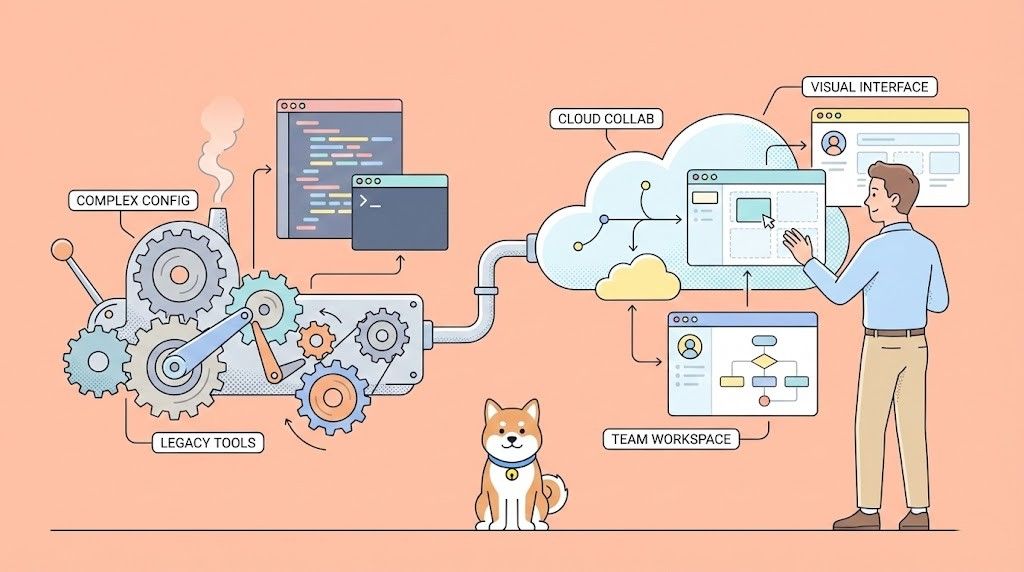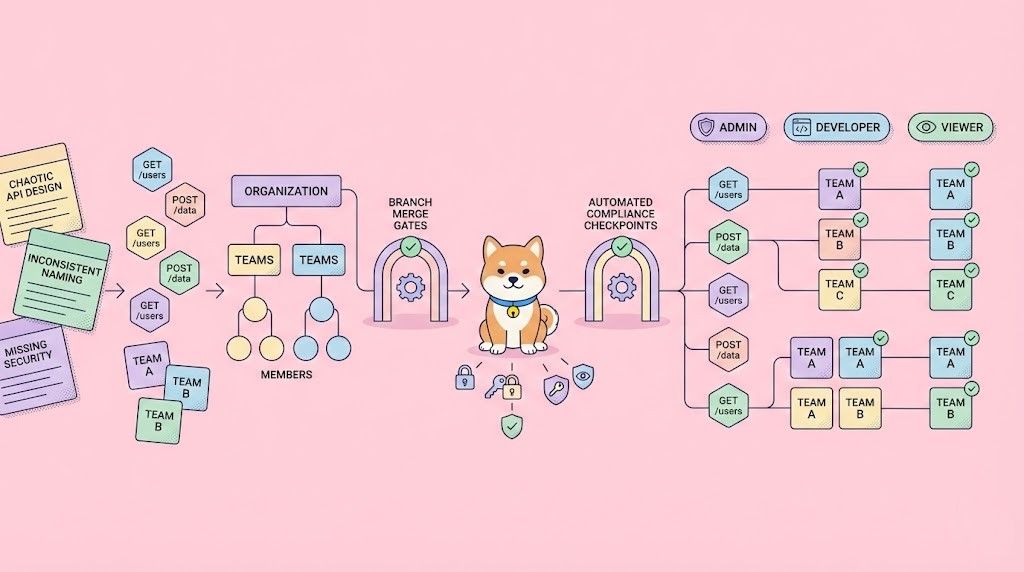In the process of software and product development, documentation is the backbone of collaboration, onboarding, product and user success. The right documentation software can transform a team’s productivity, reduce support tickets, and future-proof your product. This guide explores the best documentation tools and platforms, including knowledge bases, static site generators, API documentation tools, markdown editors, process documentation apps, and advanced publishing solutions.
What Is Documentation Software?
Documentation software refers to digital platforms and tools designed to create, manage, and share knowledge—internally or externally. These tools help teams organize technical docs, user guides, API references, onboarding materials, and more. The best documentation software streamlines collaboration, version control, and publishing, making information accessible and actionable for everyone.
Key types of documentation:
- Developer documentation: Source code, API references, architecture diagrams.
- Project documentation: Timelines, requirements, meeting notes.
- User documentation: Manuals, how-tos, FAQs, onboarding guides.
- Marketing/sales documentation: Datasheets, case studies, product overviews.
🧪 API Documentation Tools & Developer Portals
API documentation tools are purpose-built for developer experience, offering interactive, up-to-date, and testable API references.
Top Tools:
Apidog
Apidog is a modern, all-in-one API platform that combines API design, debugging, mocking, testing, and documentation. It auto-generates interactive docs from OpenAPI/Swagger, supports real-time collaboration, built-in mock servers, versioning, and LLM-friendly publishing. Apidog is the top choice for API-first teams seeking a seamless workflow.

Apiary
Apiary by Oracle is a collaborative API design and documentation platform. It enables teams to prototype APIs, generate docs, and test endpoints before writing code.

GitHub
GitHub is the world’s leading code hosting platform, offering built-in documentation features like Markdown READMEs, wikis, and GitHub Pages for static sites.

Read the Docs
Read the Docs (see above) is also widely used for API and developer documentation, automating builds and hosting from code repositories.

GitBook
GitBook (see above) is popular for API and product documentation, with Git integration and real-time collaboration.

Doxygen
Doxygen is a documentation generator that creates docs from annotated source code in multiple languages. It’s ideal for codebases needing detailed, auto-generated references.

Swagger UI
Swagger UI is an industry standard for interactive API documentation, code generation, and testing.

📚 Knowledge Base / Documentation Platforms
These platforms are the backbone of organizational knowledge, supporting everything from internal wikis to customer-facing help centers.
Top Tools:
Confluence
The enterprise standard for team wikis and knowledge management.
Confluence by Atlassian is a robust platform for internal wikis, project documentation, and collaborative knowledge sharing. It integrates tightly with Jira and other Atlassian tools, making it a favorite for large organizations and agile teams.

Document360
AI-powered knowledge base for modern teams.
Document360 offers a dual editor (Markdown and WYSIWYG), advanced analytics, versioning, and workflow automation. It’s ideal for creating user guides, product docs, and internal wikis with a focus on ease of use and scalability.

BookStack
Open-source, self-hosted documentation with a book-like structure.
BookStack organizes content into books, chapters, and pages, making it intuitive for teams that want full control and a familiar navigation style. It’s highly customizable and great for privacy-focused organizations.

Helpjuice
Enterprise knowledge base with deep analytics and customization.
Helpjuice is designed for large teams needing advanced search, analytics, and branding. It’s used for both internal and customer-facing documentation.

HelpDocs
Simple, fast, and user-friendly knowledge base.
HelpDocs is perfect for startups and small businesses that want to launch a branded help center quickly, with minimal setup and maintenance.

Heroic Knowledge Base
WordPress plugin for powerful documentation sites.
Heroic Knowledge Base lets you build internal or external docs with AJAX search, analytics, and unlimited content—no coding required.

Notion
All-in-one workspace for notes, docs, wikis, and projects.
Notion’s flexible block-based editor and real-time collaboration make it a favorite for teams seeking a unified platform for documentation, project management, and more.

Nuclino
Unified workspace for fast, visual knowledge sharing.
Nuclino features real-time editing, visual organization (lists, boards, graphs), and a clean interface, making it ideal for teams that value speed and simplicity.

Papyrs
Drag-and-drop intranet and documentation for non-technical users.
Papyrs is great for building internal wikis, HR portals, and company handbooks with minimal effort and no coding.

ProProfs
Easy-to-use knowledge base and help authoring tool.
ProProfs enables teams to create searchable, media-rich documentation, FAQs, and help centers, with built-in analytics and templates.

ReadMe
Interactive API documentation and developer portals.
ReadMe is developer-focused, offering live API explorers, customizable branding, and usage analytics for API-first companies.

Tettra
Internal wiki with Slack integration for fast-growing teams.
Tettra is designed for knowledge sharing, with a simple interface and tight Slack integration to keep everyone on the same page.

Whatfix
Digital adoption and in-app guidance platform.
Whatfix overlays walkthroughs, tooltips, and self-help widgets on your software, making it ideal for onboarding, training, and contextual documentation.

Zendesk
Customer support suite with a robust help center.
Zendesk’s knowledge base module is widely used for customer-facing documentation, ticketing, and self-service support.

Wiki.js
Modern, open-source wiki for technical teams.
Wiki.js is built on Node.js, supports Markdown, multiple databases, and a sleek UI, making it a flexible choice for developers.

ClickHelp
Cloud-based tool for multi-language user manuals and help sites.
ClickHelp offers collaboration, analytics, and customizable navigation, making it suitable for global teams and technical writers.

Atera
All-in-one IT management with built-in documentation.
Atera is designed for IT teams and MSPs, combining asset management, ticketing, and knowledge base features, all powered by AI.

Freshservice
ITSM platform with integrated knowledge base.
Freshservice is ideal for IT teams needing asset management, ticketing, and internal documentation in one place.

IT Glue
Documentation for managed service providers (MSPs).
IT Glue centralizes IT assets, passwords, and procedures, streamlining IT documentation and credential management.

N‑able Passportal
Credential and IT documentation management for MSPs.
Passportal offers secure password storage, asset tracking, and knowledge base features for IT service providers.

SuperOps
RMM/PSA platform with IT documentation capabilities.
SuperOps helps IT teams manage client assets, tickets, and workflows, all from a unified dashboard.

⚙️ Static Site Generators / Docs Site Builders
For developers who want fast, customizable, and scalable documentation sites.
Top Tools:
Docusaurus
React-based static site generator for technical docs.
Docusaurus supports Markdown/MDX, versioning, localization, and easy customization, making it a favorite for open-source and developer docs.

MkDocs
Fast, open-source static site generator for Markdown docs.
MkDocs is easy to set up and deploy, with MkDocs Material adding a modern, responsive design.

Sphinx
Python community’s go-to documentation generator.
Sphinx uses reStructuredText, supports multi-format output, and is highly extensible, making it ideal for technical and scientific projects.

Docsify
Dynamic documentation generator built on Vue.js.
Docsify renders Markdown files on the fly, supports offline mode, themes, and plugins, and is great for lightweight, dynamic docs.

GitHub Wiki
Built-in wiki for GitHub repositories.
GitHub Wiki lets you create and manage documentation alongside your code using Markdown, perfect for open-source and collaborative projects.

Jekyll
Ruby-based static site generator for GitHub Pages.
Jekyll is ideal for developers wanting to publish documentation directly from their repos, with a large theme ecosystem.

Hugo
Lightning-fast static site generator for large docs sites.
Hugo is known for its speed, flexibility, and extensive theme options, making it great for complex documentation projects.

Slate
Beautiful, three-panel API documentation generator.
Slate is popular for developer-friendly, interactive API docs with a clean, responsive layout.

AsciiDoc / Asciidoctor
Rich markup language and toolchain for technical docs.
AsciiDoc and Asciidoctor support complex formatting and multi-format output, ideal for technical manuals and books.

Nuxt Content
Headless CMS for Nuxt.js and Vue-based docs sites.
Nuxt Content enables static or server-rendered documentation sites with Vue components and Markdown content.

✍️ Markdown Editors / Writing Tools
For those who prefer lightweight, distraction-free writing in markdown or plain text.
Top Tools:
iA Writer
Minimalist markdown editor for distraction-free writing.
iA Writer’s clean interface and focus mode make it a favorite for technical writers and anyone who values simplicity.

Typora
Live preview markdown editor with seamless reading/writing.
Typora combines writing and reading in one interface, supporting export to multiple formats.

MarkdownPad
Windows-based markdown editor with live preview.
MarkdownPad is ideal for technical documentation, offering customizable themes and a straightforward workflow.

SimpleMDE
Browser-based markdown editor with live preview.
SimpleMDE is easy to use, with a clean interface and instant feedback for writers.

🧰 Interactive Guide / Process Documentation Tools
Create step-by-step guides, onboarding flows, and tutorials from real workflows.
Top Tools:
Tango
Chrome extension for auto-capturing browser workflows.
Tango turns clicks into step-by-step guides with screenshots and text, perfect for onboarding and process documentation.

Scribe
AI-powered tool for visual, step-by-step guides.
Scribe captures your actions and creates editable, shareable guides for training and support.

iorad
Interactive tutorial generator for browser and desktop workflows.
iorad records your process and produces interactive tutorials that can be embedded in knowledge bases.

FlowShare
Windows app for auto-capturing step-by-step guides.
FlowShare creates guides with screenshots and descriptions, supporting multiple export formats.

Stepsy
Browser-based tool for capturing and sharing digital processes.
Stepsy is ideal for documenting web-based workflows and sharing guides with teams.

Screensteps
Knowledge base and documentation tool with screen capture.
Screensteps is designed for structured guides, onboarding, and analytics.

Snagit
Screen capture and annotation tool for images and videos.
Snagit is perfect for enhancing documentation with visuals and quick video walkthroughs.

Whale
AI-driven documentation and training for SOPs and onboarding.
Whale automates process documentation and training, with integrations and analytics.

🛠️ Advanced Documentation / Publishing Tools
For teams needing robust, enterprise-grade documentation and publishing.
Top Tools:
Adobe RoboHelp
Enterprise help authoring tool for user manuals and online help.
RoboHelp features a WYSIWYG editor, multi-format publishing, and automation for large-scale documentation.

Adobe FrameMaker
Long-form technical content creation and publishing.
FrameMaker supports DITA, video, and advanced formatting for complex documentation projects.

How to Choose the Best Documentation Tool
Here are some helpful criteria to consider when choosing the right documentation tool for your needs:
- Ease of use: Intuitive UI, minimal learning curve.
- Collaboration: Real-time editing, comments, permissions.
- Version control: Track changes, restore previous versions.
- Customization: Themes, branding, structure.
- Integrations: Connect with project management, code repos, support tools.
- Search & organization: Fast, accurate search, logical hierarchy.
- Security: Access control, encryption, compliance.
- Analytics: Track usage, identify gaps, improve docs.
- Cost: Free, subscription, or one-time payment—match your budget.
Conclusion: Find the Best Documentation Tool for Your Team
In the rapidly changing landscape, the best documentation tools are those that empower teams to create, manage, and share knowledge with speed and confidence. Whether you need a robust knowledge base, a lightning-fast static site, interactive API docs, or step-by-step process guides, there’s a documentation platform tailored to your needs.
For API-first teams, Apidog stands out as the best documentation tool —combining design, testing, and documentation in a single, collaborative platform. Its LLM-friendly publishing and real-time features make it the top choice for modern development.



